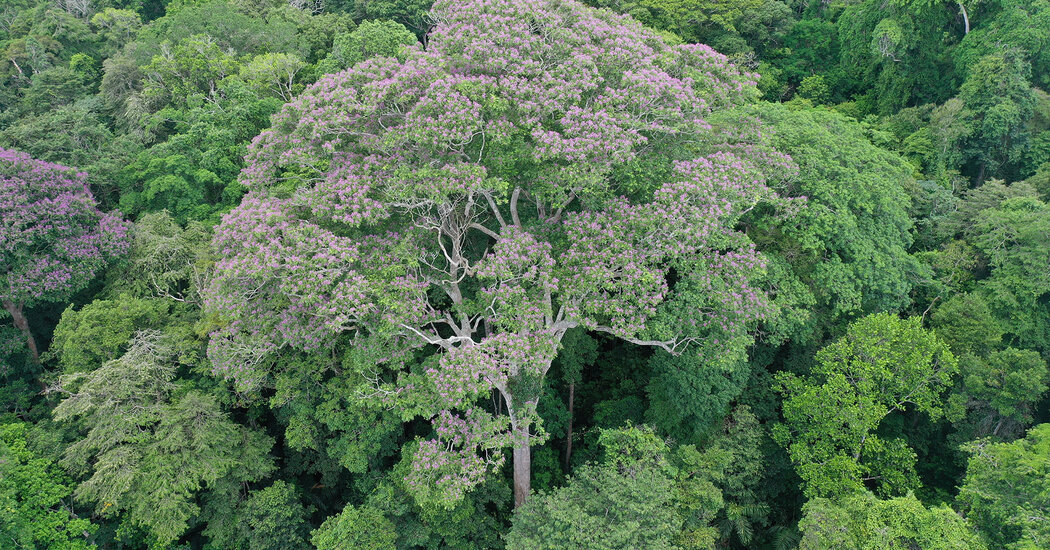Before a discovery in a Panamanian rainforest, “it seemed impossible that lightning could be a good thing for the trees,” a scientist said.
When lightning strikes a tree in the tropics, the whole forest explodes.
“At their most extreme, it kind of looks like a bomb went off,” said Evan Gora, a forest ecologist at the Cary Institute of Ecosystem Studies in Millbrook, N.Y. Dozens of trees around the one that was struck are electrocuted. Within months, a sizable circle of forest can wither away.
Somehow, a single survivor stands, seemingly healthier than ever. A new study by Dr. Gora, published last week in the journal New Phytologist, reveals that some of the biggest trees in a rainforest don’t just survive lightning strikes. They thrive.
The rainforest in Panama’s Barro Colorado Nature Monument is the perfect place to study whether some trees are immune to lightning. It’s home to the Smithsonian Tropical Research Institute and one of the most closely studied tropical forests in the world. Dr. Gora set out to study whether individual trees in the forest benefit from being struck by lightning. And if they did, does that help the population of the species survive at a larger scale?
Early on, he spent much of his time climbing trees, looking for signs of lightning damage. But making critical observations could be painfully inefficient. Dr. Gora would begin climbing one tree, convinced it was the struck trunk, only to get 50 feet up and see he actually wanted to be up the neighboring tree. Honey bees would also swarm Dr. Gora’s eyes and ears.
“Your entire life is just buzzing,” he said. “It’s horrifying.”
Dr. Gora needed a more efficient way to find struck trees, so he and his collaborators developed a method for monitoring lightning strikes and triangulating their electromagnetic signals. The technique led him more quickly to the right tree, which he could assess using a drone.
From 2014 to 2019, the system captured 94 lightning strikes on trees. Dr. Gora and his team visited sites to see which species had been struck. They were looking for dead trees as well as “flashover points,” where leaves are singed as lightning jumps between trees. From there, the canopy dies back, and the tree eventually dies.
